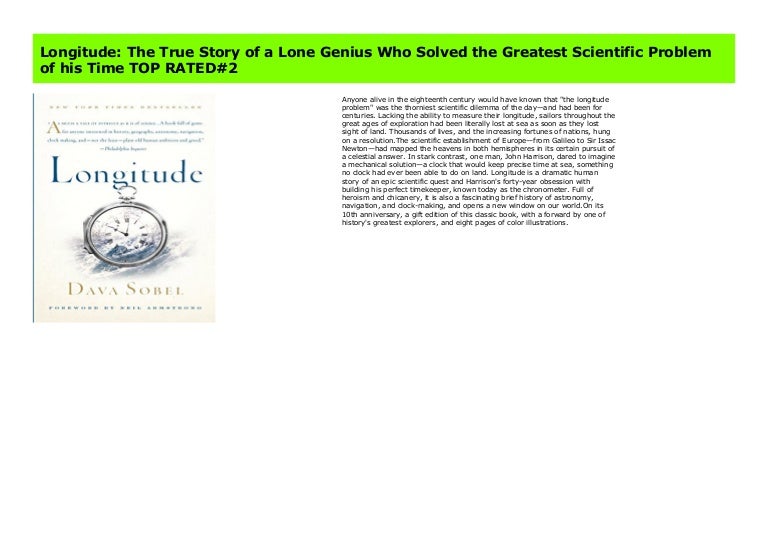
In 1730, woodworker and self-taught clockmaker John Harrison began to develop the first clock that could keep accurate time at sea. A 1707 English shipping disaster caused by poor navigation cost the lives of 2,000 sailors, and in 1714 Parliament passed a bill that offered a huge bounty to whoever could invent a means of determining one’s position accurately. Most of these ideas didn’t work at all.Īs sea travel increased during the 1600s and 1700s, the longitude problem loomed larger. Other suggestions included regularly spaced ships firing cannons at standard hours and wounded dogs made to howl at precise times.

Compasses could help determine one’s position relative to magnetic north, but this method also suffered from accuracy problems.

England’s Charles II established the Royal Observatory at Greenwich to advance this project, and the resulting data helped somewhat, but problems persisted.Ĭlocks, meanwhile, would have helped reckon longitude if only they were more accurate-those of the era could lose 15 minutes a day-and pendulum clocks, the best available, lost their accuracy at sea from changes in weather and rolling ships. Galileo and others reasoned that sailors could use ephemerides, or tables of celestial events and motions, to find their longitude. Longitude-one’s location east or west on the Earth-is hard to determine, and for much of human history sailors routinely were delayed, lost, or shipwrecked for lack of knowing it.Įarly attempts to solve this problem had mixed results.

Latitude has always been easy to reckon: Sailors simply note how high or low the sun, moon, and stars are in the sky and use that to determine how far north or south they are. These lines help travelers locate themselves on the planet.

Maps of the Earth are crisscrossed with horizontal lines of latitude and vertical lines of longitude.


 0 kommentar(er)
0 kommentar(er)
